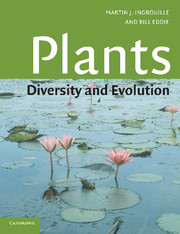Book contents
Chapter 1 - Process, form and pattern
Published online by Cambridge University Press: 05 June 2012
Summary
… an autopoietic system is a homeostat … a device for holding a critical systemic variable within physiological limits …: in the case of autopoietic homeostasis, the critical variable is the system's own organization. It does not matter, it seems, whether every measurable property of that organizational structure changes utterly in the system's process of continuing adaptation. It survives.
S. Beer, 1980Living at the edge of chaos
This chapter provides a short history of the pre-biotic Earth and of organisms in the early stages of the evolution of life. It covers the origins of photosynthetic organisms, the setting of the stage for the evolution of plants and terrestrial ecosystems, and for the subsequent diversification of plants from the Silurian Period onwards. Key early events are the evolution of metabolism, including photosynthesis, of mechanisms of heredity and of cells. Later symbiotic associations between cells provide a much broader canvas for life-forms to diverge. Other important stages in the evolution of plants were the origin of multicellularity and subsequently the functional specialisation of cell types in the multicellular organism.
Process, form and pattern are three primary features of living systems. In this section we focus individually on each of these primary criteria of life. Process first, concentrating on the origin of the processes fundamental to life, and particularly to plants – photosynthesis.
- Type
- Chapter
- Information
- PlantsDiversity and Evolution, pp. 1 - 55Publisher: Cambridge University PressPrint publication year: 2006

